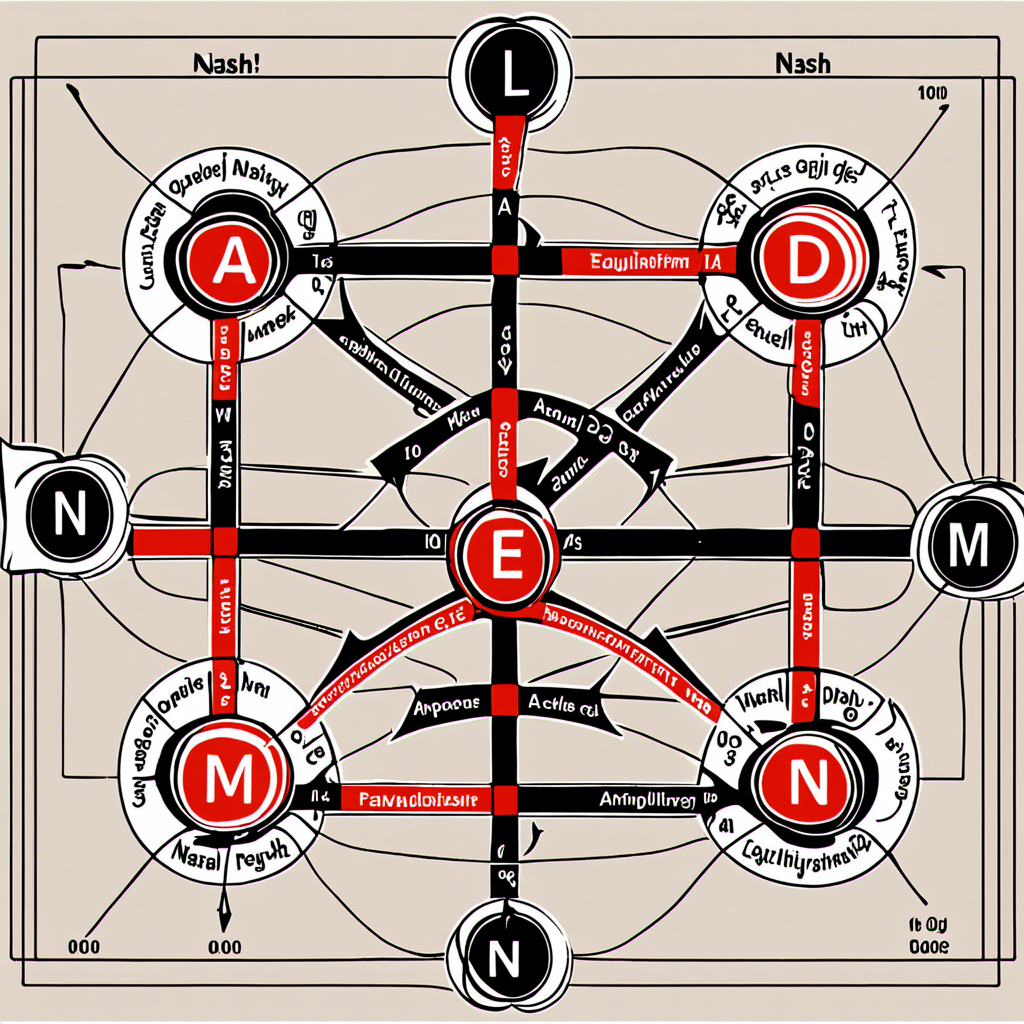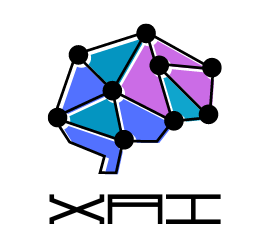“The mathematical facts worthy of being studied are those which, by their analogy with other facts, are capable of leading us to the knowledge of a physical law.”
— Henri Poincaré
Strategy can be viewed as a transitiveness in constrained conflicts, representing an equilibrium concept that involves logical relations and interactions. Strategic communication has been effectively modeled using game theory frameworks. As an example, the rules of soccer intrinsically limit the scope of play; these constraints impose structures on the players, delineating regulated zones of strategic conflict in which seemingly random events occur. Many ostensibly random choices constitute tactical ploys to achieve strategic equilibrium within the defined constraints. Therefore, strategy constitutes a dynamical code of transitiveness governing interactions under constrained chaos. Game theory provides the sole analytical approach incorporating abstract rules limited to strategic interactions. Extensive literature on game theory exists across economics and social sciences, broadly classified into cooperative and non-cooperative genres, reflecting distinct understandings forwarded by Von Neumann (1928) and Nash (1951). Von Neumann pioneered cooperative game theory, where players form binding contracts, i.e., collaboration enforced externally rather than via intrinsic incentives (Mikhael, 2001). He defined games in extensive, normal, and coalitional forms. Extensive form games constitute “finite games with perfect information” (Jackson, 2011) arranged in decision trees. Von Neumann normalized this into the real, simultaneous “normal form” and later generalized to multi-player coalitional games, establishing the cooperative framework. Myerson (2009) reviewed Schelling’s “Strategy of Conflict” (1960) and foundational developments that led to non-cooperative game theory. Von Neumann’s abstract normal form prompted critiques of realism regarding incomplete information and commitment in dynamical games. Such arguments inspired Nash’s realization of non-cooperative behaviors in strategic interactions.
Non-cooperative game theory provides a realistic representation of strategic interactions wherein cooperation among players is “self-enforcing” – i.e., without external enforcement of contracts. Players may cooperatively make choices that selfishly optimize personal outcomes. The framework’s core concept is the Nash equilibrium.
The Nash equilibrium can be defined from an individual logical element’s perspective within a strategic interaction.- an individual logical element makes a choice based on the rational model or profile of choices available with respect to its certain belief about the choices of the other players in the strategic interaction.
As Osborne (2004) states,
“…a Nash equilibrium is an action profile a* with the property that no player ‘i’ can do better by choosing an action different from ai*, given that every other player ‘j’ adheres to aj*…”

Thus, amidst the intricacies of chaos and collective intelligence, there exists an elegant concept of equilibrium that captures rational strategic behavior. Further extensions of game theory can be found in Mikhael (2001), Jackson (2011), and Osborne (2004). Beyond economics, game theory has been applied extensively in finance, military, politics, business, biology, computer science, and robotics. Specific investigations have explored its representation of swarms – Cui-ming et al. (2013) developed collision avoidance strategies in Cournot competitions to achieve cooperative optima. Annamdas & Rao (2009) proposed revised particle swarm optimization (PSO) algorithms combined with game theory to optimize engineering systems. Similarly, Leboucher et al. (year) suggested enhancing PSO with evolutionary game theory to improve convergence speeds. Furthermore, Yildiz et al. (2012, 2015, 2016) have effectively utilized Nash equilibria to model swarm behavior.
The research articles analyzed broadly unite the perspective developed so far on swarms, decentralized decision making, decentralized logic, game theory, and non-linear dynamics in the following ways:
- Game theory categorizes games into “static or dynamic games with complete or incomplete information.” Static games are strategic interactions where the players’ actions are simultaneous, while dynamic games involve sequential actions. A game with complete information is one where each player knows the payoffs and strategies available to all players. In all other cases, it is a game with incomplete information (Schuster, A, Yamaguchi, 2009).
The research in (Schuster, A, Yamaguchi, 2009) reinforces complex network analysis ideas; it presents a game-theoretic application formulating natural and artificial neuronal networks and examines a global interaction method between individual neural elements or neurons using game theory models. Its review establishes models and conclusions based on observing that learning or rational decision making are neuronal characteristics not strictly limited to “highly developed nervous systems.” A popular 1950s physiology article studying “the receptive fields of single neurons in the cat’s striate cortex” provides an experimental basis for similar logical conclusions (Hubel, D.H, Wiesel, T.N, 1959).
For swarms, identical assumptions were made earlier that swarming is not limited to biological abstractions alone and external forces play a significant role.
“…for example, predictive behavior instances exist within microbial genetic networks where bacteria anticipate changing environments. The problem-solving ability is encoded, in part, in the system’s architectural configuration.”
(Schuster, A, Yamaguchi, 2009) (Schuster, A, Yamaguchi, 2009)’s formulations use Nash equilibrium to model neuron-neuron interactions, recognizing game theory as an “organizing principle” or tool that can illustrate “neural communication, organization, and synchronization.” This improved understanding establishes sufficient groundwork to apply game theory techniques when modeling strategic 1D swarm interactions. - Next, evolutionary game theory explains biological phenomena using mathematical techniques. The models in (Schuster, A, Yamaguchi, 2009) are expanded in (Nowak, M.A & Sigmund K, 2004) to show “Evolutionary Dynamics of Biological Games” are explainable through genotypic variations related to microscopic fitness landscapes with changing phenotypic distributions.
“Roughly speaking, game theory is the mathematical toolbox for methodological individualism, the systematic attempt to found social theory on the action and needs of individual agents. For outcomes shaped by “selfish genes” or the selfish “homoeconomicus,” this is the proper instrument.” (Nowak, M.A & Sigmund K, 2004)
(Nowak, M.A & Sigmund K, 2004) accepts evolutionary biology’s mathematical grounding and enables 2D interaction modeling with continuous strategy distributions and movements described by stable evolutionary strategies (ESS), replicator dynamics and adaptive dynamics confirming frequency or frequency-dependent selection’s role in population dynamics, commonly described using “traveling waves” or “stable spatial patterns.” This implies co-existing strategy fluxes in mixed populations where fitness depends on “fluctuating frequencies” or “relative abundances” common in evolutionary games. Frequency-dependent selection in biological games uses replicator dynamics and adaptive dynamics. Replicator dynamics handles evolution’s chaotic disturbances, while adaptive dynamics considers mutation too.
(Nowak, M.A & Sigmund K, 2004) also discusses applying game theory to emerging fields like evolutionary psychology and “metabolic control networks within cells.” To quote, “The main evolutionary psychology themes of cooperation and communication among individuals are intrinsically game-theoretic. Having a theory of mind, for example, is itself a useful strategy that must help win certain games.” - Finally, (Killingback, T, Doebeli, M, 1996) expands evolutionary game theory into spatial versions where strategies distribute over a “spatial lattice.” This research identifies differences in spatial evolutionary game theory quality versus classical game theory techniques and stresses having spatial-dependence conceivability in evolutionary game theory. Spatial evolutionary game theory assists 3D representation of strategic interactions, expanding 1D-2D game techniques to 3D-reality.
The dimensional overviews find an incredible merger in (Weibull, J.W, 1994), an economics and social research article describing the ‘mass action interpretation of Nash equilibrium.’ A modified mathematical model derived in the next part prototypes a structure for ‘the mass action of the mass action interpretation of Nash equilibrium (M.M.A.I)’ to represent and universalize swarm intelligence. The final calculated function mathematically describes artificial general intelligence and its relationship to the technological singularity.
It is imperative for readers to understand all information presented so far to appreciate the final technical theory on artificial general intelligence. Referring to in-text citations simultaneously will quickly resolve any gaps in understanding. Having a basic grasp of (Weibull, J.W, 1994)’s population dynamics before attempting to comprehend the final segment may be useful, or readers can build relevant knowledge as they go from the remaining blogs.
References
[1] Mikhael, S. (2001-2006). Dictionary of Game Theory Terms. Retrieved May 22, 2017, from GameTheory.net: http://www.gametheory.net/dictionary/
[2] Jackson, M.O. (2011). A Brief Introduction to the Basics of Game Theory. 1-21. Retrieved from https://papers.ssrn.com/sol3/papers.cfm?abstract_id=1968579
[3] Myerson, R.B. (2009). Learning from Schelling’s Strategy of Conflict. Journal of Economic Literature, 1109-1125. doi:10.1257/jel.47.4.1109
[4] Osborne, M.J. (2004). An Introduction to Game Theory.
[5] Cui-ming, L, Ping, Y, Jun, G & Wan-cai, N. (2013). Swarm robotics collision strategies based on game theory. Applied Mechanics and Materials, 182-186. doi:10.4028/www.scientific.net/AMM.328.182
[6] Annamdas, K.K, Rao, S.S. (2009). Multi-objective optimization of engineering systems using game theory and particle swarm optimization. Engineering Optimization, 41(8), 737-752. doi:10.1080/03052150902822141
[7] Leboucher, C, Shin, H, Siarry, P, Le Menéc S, Chelouah, R & Tsourdos, A. (n.d.). Convergence Proof of an enhanced Particle Swarm Optimisation method integrated with Evolutionary Game Theory. Elsevier – Information Sciences, 389-411. doi:10.1016/j.ins.2016.01.011
[8] Yildiz, A, Ozgular, A.B. (2012). Swarming Behavior As Nash Equilibrium. IFAC Proceedings Volumes, 45:26. doi:10.3182/20120914-2-US-4030.00046
[9] Yildiz, A, Ozgular, A.B. (2015). Partially Informed Agents can form a Swarm in a Nash Equilibrium. IEEE, 60(11), 3089-3094.
[10] Yildiz, A, Ozgular, A.B. (2016). Foraging motion of swarms with leaders as Nash equilibria. Elsevier – Automatica, 163-168.
[11] Schuster, A, Yamaguchi. (2009). Application of Game Theory to Neuronal Net- works. 2010. doi:10.1155/2010/521606
[12] Hubel, D.H, Wiesel, T.N. (1959). Receptive fields of single neurons in the cat’s striate cortex. The Journal of Physiology, 574-591.
[13] Nowak, M.A & Sigmund K. (2004). Evolutionary Dynamics of Biological Games. SCIENCE, 303, 793-798. Retrieved April 8, 2017, from www.sciencemag.org
[14] Killingback, T, Doebeli, M. (1996). Spatial Evolutionary Game Theory: Hawks and Doves revisited. Proceedings: Biological Sciences, 263, pp. 1135-1144.
[15] Weibull, J.W. (1994). The Mass-Action Interpretation of Nash Equilibrium. Industriens Utredningsinstitut – The Industrial Institute for Economic and Social Research, 427, 1-17.
[16] Weibull J.W. (1994). Evolutionary Game Theory.
[17] Nash, J. (1950). Non-Cooperative Games. Mathematics Department, Princeton University. Princeton University.
